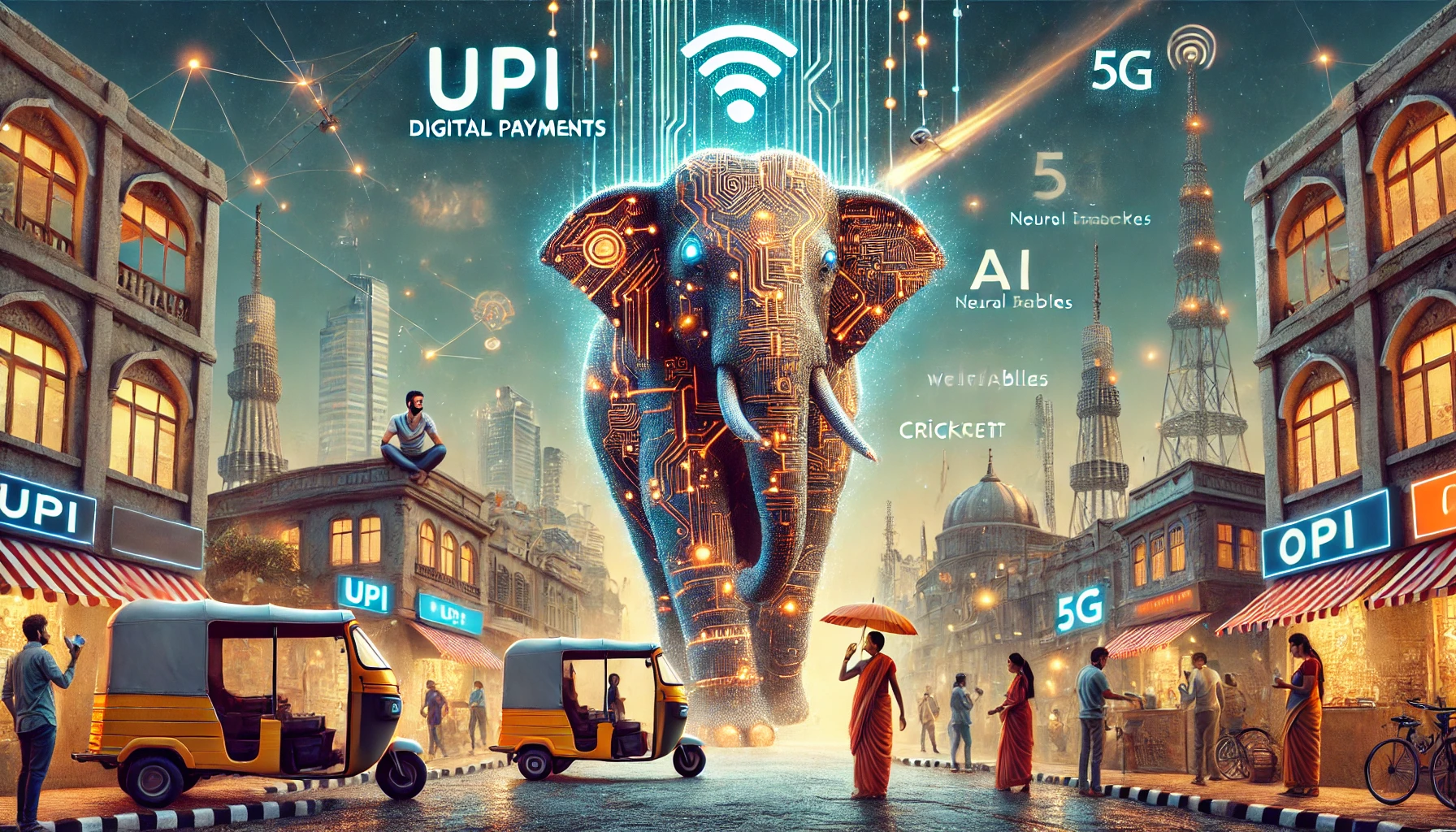
Building Tech Products for India: A First-Principles Playbook
India’s tech landscape is like no other – a billion-strong, culturally rich market where cricket and cinema command daily life, and cutting-edge digital payments coexist with ancient traditions. Developing products here requires first-principles thinking: understanding fundamental local needs and behaviors rather than copying Western models. The following insights, backed by data and examples, explore how cultural, economic, and technological factors make India a uniquely challenging and rewarding market for innovation.
Cultural Catalysts: Cricket and Cinema Drive Tech Adoption

Indians’ passion for cricket and movies isn’t just entertainment – it shapes tech usage on an unprecedented scale. Major cricket events like the Indian Premier League (IPL) trigger record-breaking digital engagement. During a single World Cup cricket match in 2019, Hotstar saw 8,000 new app installs per minute, 36× the normal internet sign-up rate . In 2024, fantasy sports platform Dream11 onboarded 1.1 million new users in one day at IPL’s start (with 15 million concurrent users) . These staggering spikes show how cricket-mania can catapult a tech product into mass adoption overnight. Cinema has a similar pull: Bollywood’s huge audience has fueled online streaming and short-video apps that cater to local languages and song-and-dance content. Platforms from YouTube to Instagram have had to offer regional language interfaces and music libraries full of film hits to attract India’s 500+ million online video viewers. Tech products that tap into cricket fervor (like AR-enabled sports gaming) or cinema culture (such as movie marketing via TikTok-style challenges) often find eager users. In short, winning India often means embracing its pop culture – whether that’s live-streaming cricket matches to millions or using film stars and memes to connect with young consumers.
Scaling for a Billion: Localization and Price Sensitivity

With a population of 1.4+ billion, India offers scale – but also a mandate to localize. Products must be ultra-adapted to local needs and price points. Companies have learned this the hard way. For example, global home brands discovered Indians expect certain features as standard: a simple Western toilet wasn’t enough without the ubiquitous toilet hand spray (bidet shower) that Indians use for hygiene. E-commerce giants similarly had to tweak their models. Indian shoppers are famously price-sensitive, so Amazon and Flipkart introduced free delivery thresholds as low as ₹499 (about $6) and embraced Cash-on-Delivery, since over 60% of online orders were initially paid in cash. “One size fits all” fell flat – instead, success comes from first-principles adaptation. IKEA’s entry is telling: Knowing that Indian consumers are used to “do-it-for-me” service, IKEA scrapped its pure DIY approach and set up its first-ever in-house furniture assembly team (150 people) in India . It even partnered with local startup UrbanClap (now Urban Company) to ensure shoppers could get their furniture assembled at a nominal cost . As a result, Indian customers could enjoy IKEA’s low prices and have someone else handle the Allen keys – a crucial compromise in a market where, unlike in the West, “assemble it yourself” is a tough sell. Localization can be as subtle as adapting a mattress – IKEA found Indians prefer firmer, cooler beds, so it developed a mattress with a cooling coconut fiber layer for the Indian market. Time and again, global firms learned that thriving in India means reinventing products from the ground up: adding features, services, and pricing schemes that align with local habits and incomes.
The Aspiring Middle Class: From Copycats to Demanding Innovators
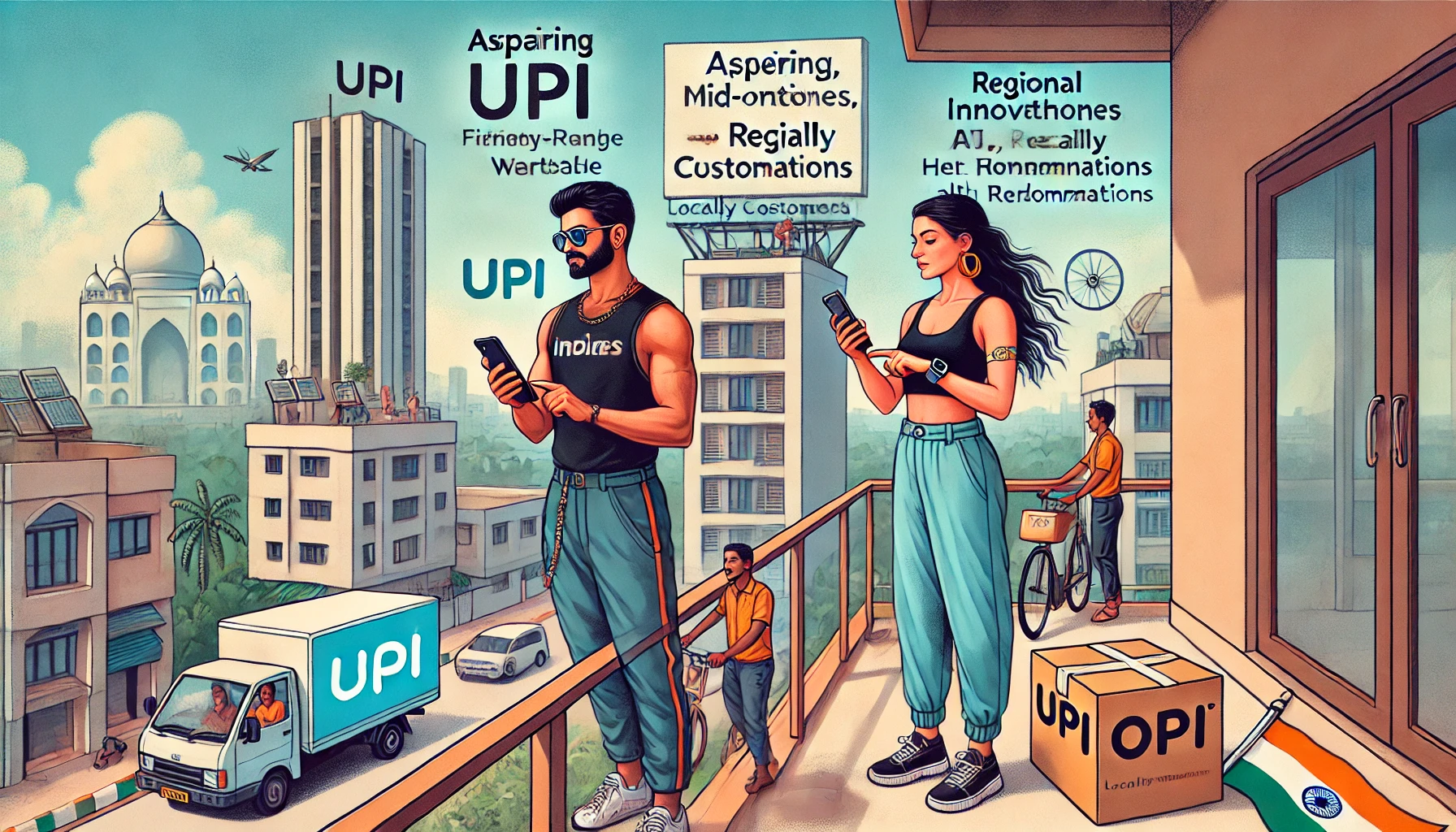
India’s middle class – over 400 million strong and growing – has evolved from aspiring to Western lifestyles to expecting world-class, localized products of their own. In the 1990s, simply owning a foreign brand was a status symbol; today’s middle-class consumers demand products suited to them. As one marketing professor observed, Indians moved past blind reverence for “phoren” goods once local offerings improved – now a brand only wins if it truly meets Indian needs . This is a generation that skips landlines entirely for smartphones, leapfrogging legacy tech. By 2030, nearly 80% of Indian households will be middle-income, up from ~50% today, and this segment will drive 75% of consumer spending. Crucially, much of that new spending will go toward “buying better” – upgrading to premium, personalized options . In practice, that means a rising urban professional doesn’t just want any fitness app; she wants one tailored to Indian diets and yoga routines. Middle-class Indians are no longer content with second-hand innovation. They patronize companies like OnePlus and Xiaomi, which offered flagship phone specs at mid-range prices, forcing giants like Samsung to respond. They flock to UPI mobile payments, a homegrown innovation that’s far more seamless (and free) compared to card networks – in effect, preferring an Indian solution that’s leapfrogged Western systems. As Harminder Sahni of Technopak Advisors notes, India finally reached a critical mass that justified big brands investing in customization. The result: more and more products “built for India.” We see global automakers launching India-specific car models (with say, high ground clearance for rough roads), and streaming services creating original Hindi and Tamil content rather than only importing Hollywood. The new Indian middle class is aspirational but not naive – they’re willing to spend, but on products that reflect their reality. Companies that deliver “glocal” innovations (global quality, local fit) – from affordable water purifiers to apps that work offline in patchy networks – are reaping the rewards of this huge, savvy market.
Unity in Diversity: Designing for Many Indias (Languages and Cultures)
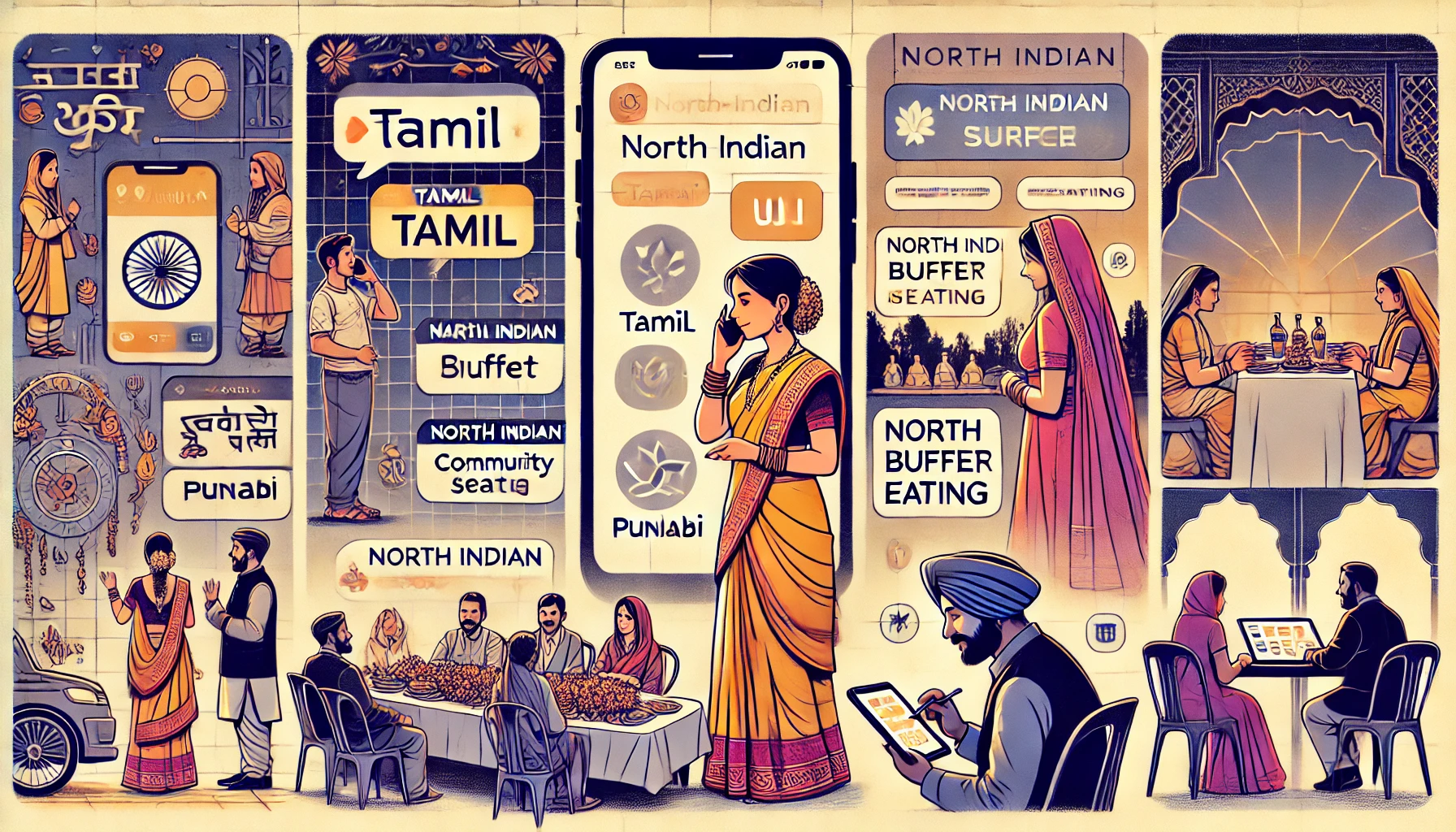
Building for India means building for dozens of micro-markets defined by language, region, and culture. There are 22 official languages (and hundreds of dialects), each with its own user base craving content and interfaces in their tongue. English may have been the internet’s first language in India, but that era is over – by 2016, 234 million Indian-language internet users surpassed English users (175 million), and by 2021 over 75% of internet users were consuming content primarily in local languages. As Google’s former India head put it, “English is over…almost every new user coming online – roughly 9 out of 10 – is not proficient in English” . This reality has driven a wave of localization: apps now support menus and voice input in Hindi, Bengali, Tamil, Marathi, and more. During IPL cricket matches, Hotstar even noted viewership spiking in the language of the home team – e.g. a 2× jump in Tamil streaming when Chennai played – underscoring the importance of regional languages in engagement. Social media upstart ShareChat seized this opportunity by building a vernacular social network. Founded in 2015 with a mission to “embrace India’s linguistic diversity,” ShareChat today boasts over 300 million monthly active users across 15 Indian languages. It succeeded where Facebook didn’t by tailoring memes, keyboard inputs, and AI feed algorithms to each language community, whether it’s Punjabi or Kannada. Likewise, e-commerce and matchmaking platforms have gone hyper-local. The matrimony service BharatMatrimony operates over 300 community-specific sites launched for different castes, religions, and regions – from TamilMatrimony to BengaliMatrimony – because that’s how Indians seek life partners. This micro-targeting paid off, giving Matrimony.com about 5 million active users and a trusted brand across demographics . The lesson: to win Indian users, speak their language – literally and figuratively. Whether it’s customizing wedding planning apps for regional customs (North Indian big-fat wedding vs. South Indian ceremonies) or ensuring a voice assistant understands Hinglish (mix of Hindi and English), successful products respect India’s pluralism. Companies must effectively build multiple “Indias” into one product, a challenge that requires modular design and perhaps a marketplace of local partnerships. But those who get it right unlock enormous new user bases that monolingual or monocultural competitors simply can’t reach.
Tradition Meets Tech: AI and Ayurveda in the Wellness Boom

Far from rejecting traditional practices, India’s tech scene is increasingly integrating them – especially in health and wellness. Millennials and Gen Z are rediscovering yoga, Ayurveda (ancient herbal medicine), and holistic diets, but with a modern, personalized twist. This has given rise to startups blending AI with traditional knowledge systems to create uniquely Indian innovations in healthcare. The market numbers are telling: India’s Ayurveda product industry is projected to nearly double from $7 billion today to $16 billion (₹1.2 trillion) by FY2028, amid surging demand for natural remedies and wellness solutions. Entrepreneurs are riding this wave by adding data and personalization to age-old wisdom. A case in point is Ultrahuman, a metabolic fitness platform known for its glucose-monitoring wearable. Ultrahuman recently partnered with Ayurvedic retreat center Amal Tamara to create a combined program – guests wear continuous metabolic trackers while undergoing Ayurvedic therapies . The result: practitioners and users can observe real-time biofeedback on how herbal treatments or yoga sessions affect their blood sugar, heart rate, and metabolism, quantifying outcomes that were traditionally qualitative . This marriage of “ancient and cutting-edge” enables truly personalized wellness regimens, where AI algorithms might adjust your herbal supplement dose based on daily sensor readings. Other startups like NirogStreet are digitizing Ayurveda by connecting patients with Ayurvedic doctors via telehealth, while Ayurveda-focused e-commerce brands (The Ayurveda Experience, Dabur’s online arm, etc.) are booming. Even in mainstream fitness, apps like Cure.fit have combined modern gym workouts with yoga and meditation classes on their platform, recognizing that an Indian user’s definition of fitness often includes spiritual and holistic health. Traditional knowledge is not a hurdle to innovation in India – it’s a springboard. Companies that treat it with respect and augment it with technology are gaining credibility. For example, an AI-driven diet coach that suggests meals from Ayurveda’s recommended foods for your body type, or a mental health app that uses guided meditation techniques drawn from Vipassana, can immediately resonate with Indian users on a cultural level. By using first principles, startups realize that for millions of Indians, “scientific wellness” and “traditional wellness” are complementary, not contradictory. The most loved health-tech brands might be those that can seamlessly recommend both a yoga routine and a protein intake target, bridging worlds in a way that feels natural to India.
Leapfrogging with Local Innovation: UPI, 5G, and Indigenous Tech Infrastructure
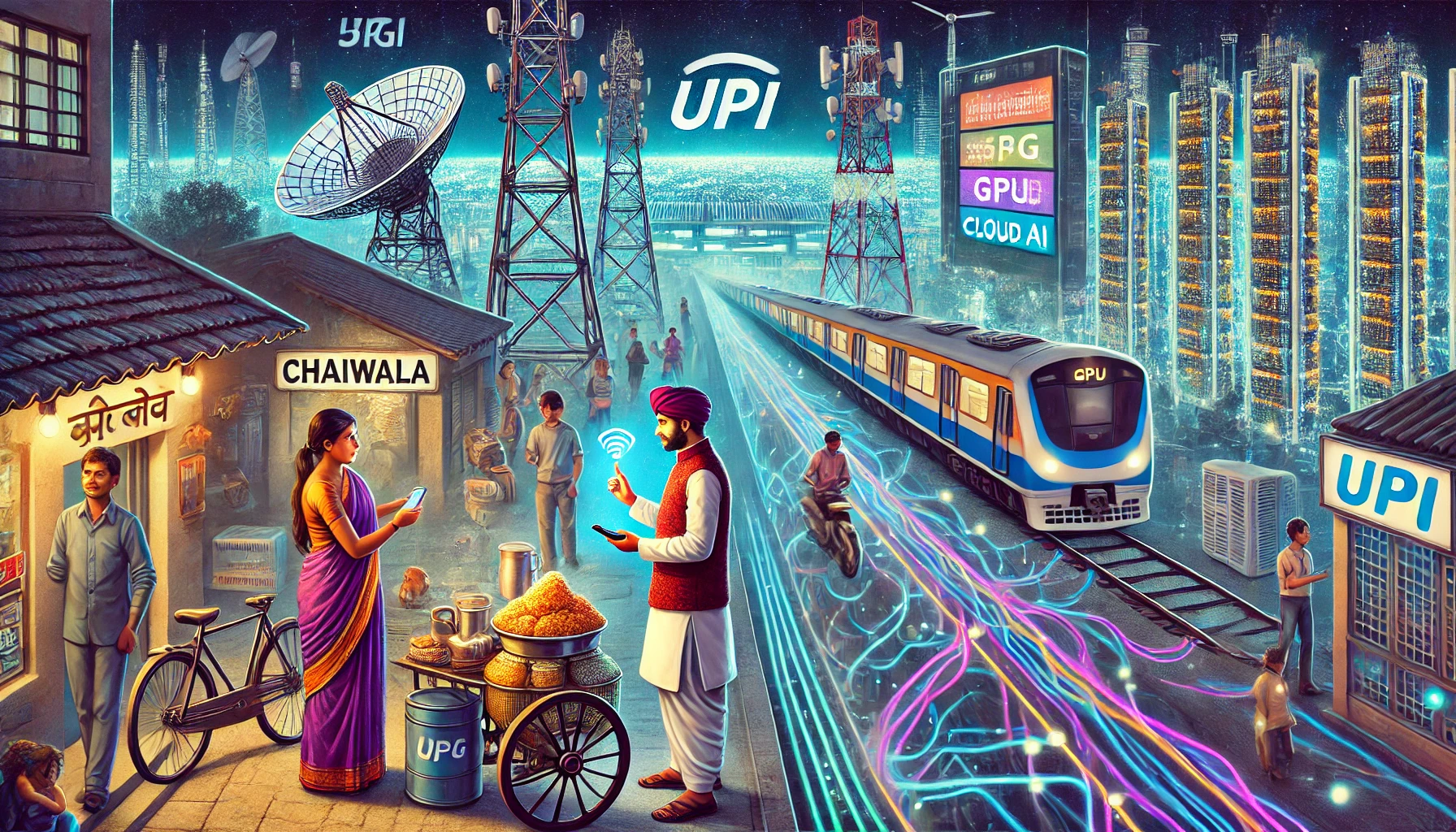
One striking aspect of India’s tech journey is how it often leapfrogs legacy systems entirely, developing its own innovations suited to local constraints. Nowhere is this clearer than in digital payments. The Unified Payments Interface (UPI), launched in 2016, has revolutionized money movement in India. UPI enables instant, free bank-to-bank transfers via mobile and QR code – and its adoption has been explosive. By August 2023, UPI was handling 10+ billion transactions per month, with UPI payments value equal to ~55% of India’s GDP in FY2022. From upscale malls to roadside tea stalls, the UPI QR code is everywhere: even a humble fruit vendor or rickshaw driver now displays a “Scan Me” QR placard to accept digital payments. This grassroots fintech penetration – bringing millions of small merchants into the digital economy – is a case study in first-principles design. UPI succeeded by being simple (just a smartphone or even a basic phone with UPI PIN works), interoperative across banks, and cost-free. It bridged a trust gap for those with limited digital literacy, effectively onboarding “cash-only” users into cashless payments overnight . The fact that 30 million merchants were using UPI by 2023 (with even larger growth ahead) shows how India can adopt tech at population scale when it truly fits local needs.
This leapfrogging mindset extends to hard tech infrastructure as well. India missed the PC revolution, but it’s aiming not to miss the next waves like 5G and AI hardware. The government has championed an indigenous 4G/5G telecom stack, developed by local engineers at C-DOT in partnership with Tata Consultancy Services, which is now being deployed by BSNL (the state-run telco) – a fully homegrown alternative to Huawei or Ericsson gear. In October 2024, trials of India’s own 5G radio and core network in 3.5 GHz and 700 MHz bands were declared successful paving the way for BSNL to roll out 5G services built on Indian technology. This is not just flag-waving – owning the tech stack could lower costs and improve security for India’s networks, and potentially make India an exporter of telecom solutions to other emerging nations. Similarly, recognizing the importance of AI compute power, India announced plans to set up massive GPU farms domestically. The government’s new IndiaAI program will make 18,000 high-end GPUs available in a national AI cloud for startups and researchers . In early 2025 the IT Minister even stated that India aims to develop its own high-end GPU chips in 3–5 years – an ambitious goal, but one that indicates a desire to secure a place in the global AI hardware race. In parallel, the Semicon India initiative is offering $10 billion in incentives to attract chip manufacturers. A big win came with Micron’s decision to invest $2.7 billion in a semiconductor assembly and test facility in Gujarat, with the government covering 50% of the cost. Construction on this plant began in 2023, marking India’s entry into the chip supply chain at a crucial juncture.
These efforts show India’s appetite to not just consume tech but build tech – at India scale. When digital public goods like Aadhaar (the biometric ID covering 99% of adults) and UPI form a foundation, private innovators can layer services on top (eKYC, digital lending, etc.), accelerating fintech and gov-tech startups. And when the country invests in its own infrastructure – be it a 5G stack or AI supercomputers – it signals to entrepreneurs that the underlying plumbing will keep up with their ambitions. In essence, India is simultaneously a fast adopter (leading in real-time digital payments) and a nascent producer (from satellites to semiconductors), making it a market where innovation happens at both the software and infrastructure levels.
Service as a Differentiator: High-Touch Expectations in India

Indian consumers have high service expectations, and companies that exceed on customer experience often win loyalty. Culturally, retail in India has long been high-touch: from the corner shop owner who knows your preferred brand of atta (flour), to the tailor who home-delivers altered clothes, personal attention is the norm. This extends into the digital age. A global survey found 82% of Indian consumers expect personalized service – the highest in the world . Two in three Indians still prefer dealing with a human over a bot if given a choice . Even tech-savvy users appreciate when apps offer a human callback or WhatsApp support. This means that a “build and forget” product approach won’t fly – Indian users value startups that invest in customer success and after-sales.
Consider e-commerce: in many countries, buying furniture online means you assemble it yourself. In India, however, consumers implicitly expect assembly to be taken care of (often at minimal or no extra charge). As mentioned, IKEA recognized this “do-it-for-me” culture and integrated assembly services into its offering. Similarly, when selling appliances or electronics, Amazon and Flipkart arrange installation demos through authorized partners as part of the purchase. The booming success of Urban Company, which provides on-demand home services (electricians, AC repair, beauty treatments at home, etc.), underscores willingness to pay for convenience – but also that customers want reliability and professionalism in these services, which tech platforms had to step up and ensure in a previously unorganized sector. Delivery speed and experience is another arena: Indian e-commerce shoppers grew to expect free same-day delivery in metros and the option to open/inspect items on delivery (a practice to build trust). Grocery startups like Zepto and Dunzo pushed the envelope with 10-minute deliveries, essentially turning convenience into a competitive tech-enabled service.
On the SaaS side, B2B startups targeting Indian SMEs learned that they needed on-ground sales and support teams to educate traditional business owners – a pure self-serve model often didn’t gain traction due to trust barriers. Companies like Khatabook (a digital ledger for small merchants) scaled by complementing their app with a helpline and community videos to get shopkeepers comfortable moving from pen-and-paper to phone. In essence, the Indian consumer expects a product to come with people attached – whether literally (a service person at the door) or virtually (responsive customer care). Designing an Indian user journey often means adding extra steps for reassurance: follow-up calls, generous return policies, user education campaigns, even influencer-led tutorials in local languages. While this high-touch approach can increase cost, it also builds a moat. Brands that delight users with respect and hand-holding often earn the holy grail of Indian business – word-of-mouth referrals in family and friend networks that are tight-knit and hugely influential.
Beyond the Hype: New Frontiers of Deep Engagement
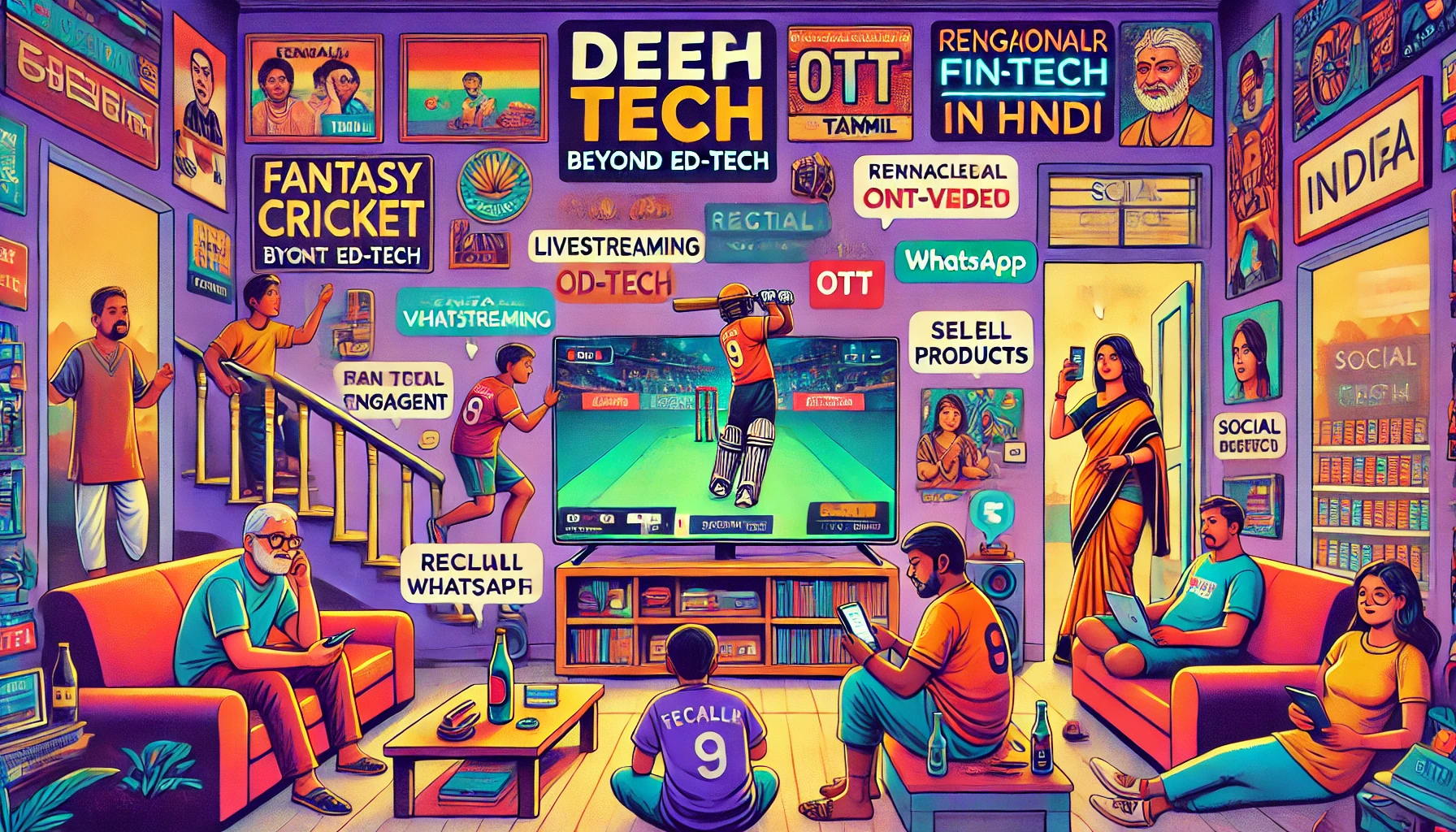
In recent years, some sectors in India’s tech scene became arguably overhyped – take ed-tech, where easy funding led to a glut of apps offering generic video classes and expensive subscriptions, not always aligned with outcomes. By 2023, the ed-tech gold rush cooled significantly (global EdTech VC funding in Q1 2023 was 80% down from the previous year) , and leaders like Byju’s faced customer and regulatory backlash. This correction has prompted founders and investors to refocus on sectors where technology drives deeper daily engagement and solves more fundamental problems. One such space is gaming and digital entertainment. India is now one of the world’s largest mobile gaming markets. Particularly, fantasy sports and esports have exploded thanks to the aforementioned sports culture and affordable smartphones. Fantasy platforms like Dream11 have well over 100 million users and turned cricket knowledge into a competitive online sport itself . A 2024 report noted India’s fantasy gaming market was growing ~30% CAGR and that IPL cricket alone contributed 35%+ of fantasy sports revenue . Beyond fantasy leagues, there’s a surge in casual mobile games, interactive fiction apps, and game streaming communities (e.g. loco) catering to a young audience that spends hours a day on these activities – far more time than they ever spent on a learning app.
Another high-engagement frontier is social commerce and community-driven platforms. With hundreds of millions of new internet users from smaller towns, social commerce has picked up where traditional e-commerce left off – by adding a layer of discovery and trust via social networks. Meesho, a Y Combinator-backed startup, pioneered this model by enabling individuals (often homemakers) to resell products through WhatsApp and Facebook networks. By offering bargain prices and leveraging peer referrals, Meesho tapped into a huge non-metro customer base and recorded 140 million annual transacting users in 2022 (hitting 175 million in 2024). Those numbers made it India’s fastest platform to reach 1 billion orders, outpacing Amazon’s growth in the region . The takeaway: products that feel like “for the people, by the people” resonate strongly – whether that’s community group buying, user-generated content, or referral-driven growth. We see similar dynamics with regional language content platforms (ShareChat again, or Moj for short videos) where users become creators and promoters, creating a virtuous engagement cycle that purely transactional services lack.
Emerging opportunities abound in areas like agritech (empowering millions of farmers with market prices, weather alerts, and AI-driven insights), vernacular OTT streaming (serving binge-worthy series in Gujarati, Marathi, etc.), cleantech and EVs (Indians are rapidly adopting e-scooters and solar panels as affordability improves), and Bharat fintech (services targeting rural and semi-urban users, such as sachet insurance, micro-investment apps or BNPL tailored to low-credit populations). These are spaces where solving hard problems can also lock in loyal users—because the solutions become part of their daily lives or livelihoods. The next wave of Indian unicorns may very well emerge from these sectors that reflect the core needs of “Bharat” (the colloquial term for the heartland) more than the VC-favored sectors of the last wave. Companies are now asking: does this product hook users long-term by improving their quality of life or income? If the answer is yes (e.g. an agritech app that raises a farmer’s crop yield, or an AI tutoring bot that genuinely boosts a child’s learning outcomes), then it’s addressing a deep engagement need and not just a pandemic-era fad.
Rising Stars: Indian Startups with Global Ambitions

A new cohort of Indian startups is proving that products built for India can also go global. In fact, Y Combinator’s president Garry Tan noted a steep rise in Indian founders – applications from India to YC jumped 45% between 2020 and 2022, and multiple Indian startups made it into the highly-selective Winter 2024 batch . Many of these are AI and deep-tech ventures aiming at worldwide markets from day one. For example, the YC Winter 2023 class included Bangalore-based Mantys, which built a SaaS tool to help companies forecast revenue in real time, and Chennai-based SuperAPI, which created a smart API caching gateway to speed up software development – these are B2B products as sophisticated as any Silicon Valley peer. Another, UpTrain AI , offered an open-source ML observability platform to improve AI models, indicative of Indian engineers tackling frontier tech challenges. Indian entrepreneurs are no longer confined to making clones of Western apps; many are leading in emerging domains like generative AI, robotics, and space tech.
Fintech leader Razorpay is a shining example: founded via YC in 2015, it started by solving online payments for Indian businesses when options were scant. Over 9 years it evolved into a full-stack financial platform serving everyone from kirana shops in Kashmir to exporters in Kanyakumari . Razorpay introduced innovations like instant settlements and was the first Indian fintech to build a full-stack international payment gateway (through its acquisition of Curlec in Malaysia) . Now processing billions in payment volume, it’s expanding across Southeast Asia and is valued well over $5 billion. Likewise, neobank Groww (another YC alum) has taken its simple investment app model to other emerging markets, and social commerce player Meesho eyes South East Asia for expansion of its low-cost retail model. Enterprise tech is another arena: Indian-founded Postman (API development platform) and Hasura (GraphQL developer tooling) have won global developer communities – these tools were built from India with a first-principles focus on efficiency that appealed universally.
The startup ecosystem in India has matured such that by 2022, Indian startups were second only to US in number on YC’s Top Companies list, with 10 Indian companies (like Meesho, ClearTax (Clear), Groww, Khatabook) making the cut . This is a clear signal that many Indian startups are scaling to world-class status. Even in frontier areas traditionally dominated by NASA/ESA or Silicon Valley, Indian companies are making their mark: Skyroot Aerospace in 2022 launched the first private rocket ever built in India into space successfully , a milestone that opens the door for an Indian SpaceX-equivalent targeting the small satellite launch market. Their rocket achieved Mach-5 and reached 90 km altitude, and Skyroot’s goal of cutting launch costs by 90% shows a first-principles rethinking of rocketry . In satellites, Pixxel (Bangalore-based) is building a constellation of hyperspectral imaging satellites and got its technology on SpaceX launches. In biotech, startups are working on affordable medical devices and new vaccines. This generation is as comfortable pitching to global investors on Zoom as they are navigating India’s complexities. They benefit from India’s massive talent pool – the country produces 1.5 million engineers each year, including tens of thousands with top-notch computer science and data science training – and from an increasing flow of capital and mentorship in the ecosystem. Importantly, many have honed their products on the proving ground of India’s market (with its low margins, high volume, and unforgiving users) which in turn makes their solutions robust for international markets. When a fintech has solved digital payments for a billion people with hundreds of banks and multiple languages, scaling to say Southeast Asia or Africa with a few tweaks is a natural next step.
Ingredients for Global AI Leadership: Talent, Tech, and Policy
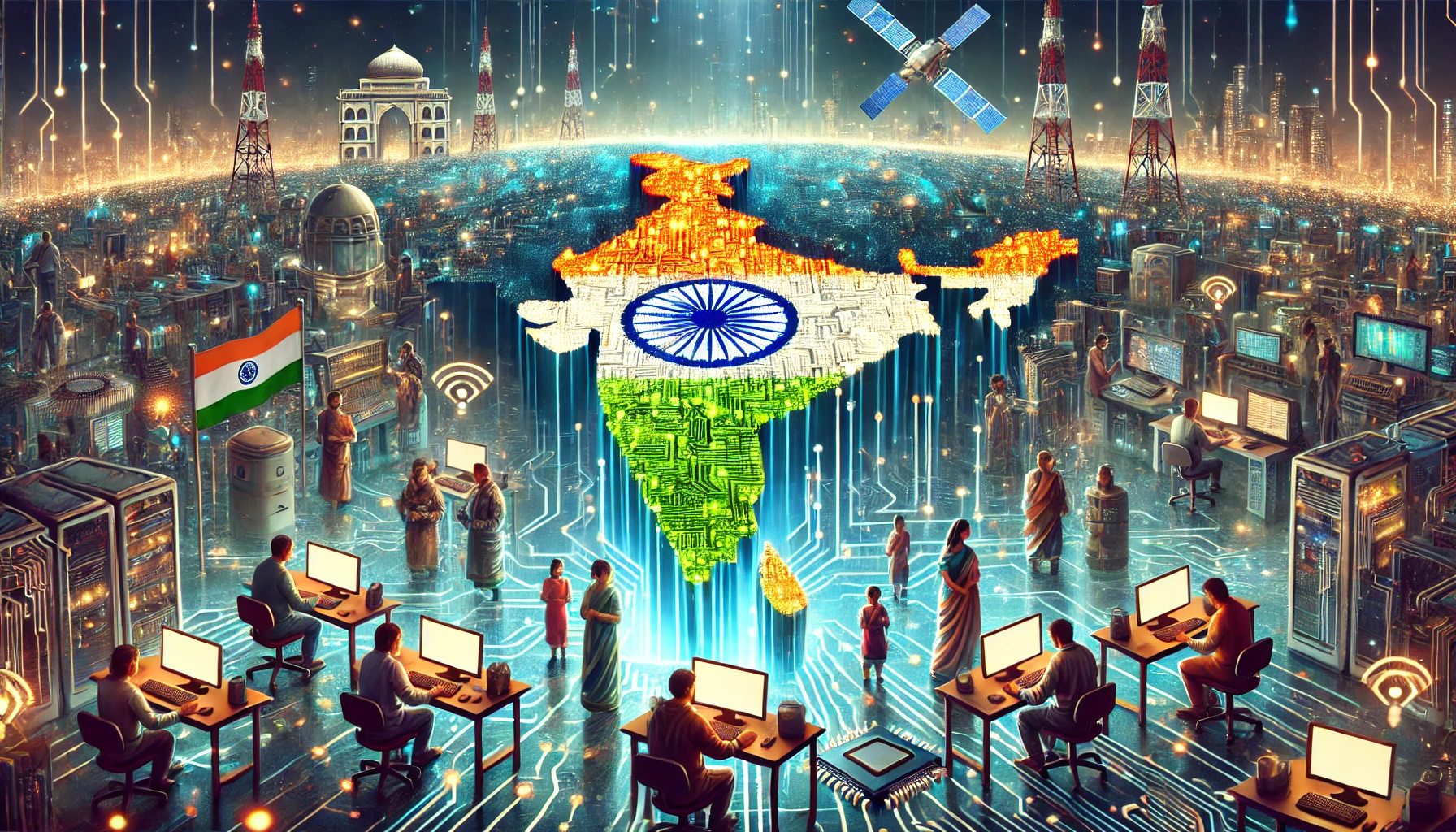
India stands on the cusp of being an AI powerhouse, but realizing this potential will require connecting its inherent strengths with strategic focus. On the plus side, talent is abundant: not only does India have a large IT workforce, but it’s also the source of many top AI researchers and leaders (one can note that the CEOs of Google/Alphabet, Microsoft, IBM, and Adobe are all of Indian origin). Domestically, AI adoption is already among the highest in the world – an estimated 80% of Indian companies were piloting or using some form of AI by 2023, and India ranked 1st in an ORF study for AI readiness among emerging economies. The government has launched programs like Digital India and the upcoming IndiaAI mission to encourage AI solutions in agriculture, healthcare, and governance. Crucially, India has built digital public goods like Aadhaar (digital ID for 1.3+ billion) and UPI (100+ million daily transactions) that create rich data streams and platforms on which AI-driven services can run. For example, the India Stack’s open APIs enable authentication, payments, and data sharing (via the new Account Aggregator framework) in a consented manner – a treasure trove for fintech and health-tech AI applications that few countries can match at this scale.
Infrastructure is catching up too. Besides the 18,000-GPU public cluster plan, private cloud providers are ramping up data center investments in India, meaning AI startups will have lower latency and cheaper access to computing power. Telecom operators are rolling out 5G across major cities, which will support AI at the edge (think smart factories, IoT in agriculture, AR/VR content delivery). There’s also a push for semiconductors, as mentioned, with the government actively courting fabs and chip designers. In short, many raw ingredients for an AI boom – data, talent, users, capital – are present. What might be lacking? One element is focused policy and higher R&D spending. The country’s R&D expenditure is still only ~0.64% of GDP, far behind China (2.4%) or the US (3.5%) . The Economic Survey notes this gap and the relatively low private R&D contribution in India (36% vs ~75% in the US/China) , highlighting a need for incentives to industry to invest more in innovation. Policymakers are aware: there are discussions to devise an AI regulatory framework that balances innovation and ethics, and to update data protection laws that govern the use of the massive datasets being generated. The Semicon India program’s $10B incentive is a sign of willingness to spend big where it matters, and similar bold investments in AI research (for example, funding universities to create AI centers of excellence, or sponsoring a national “IndiaGPT” large language model trained on diverse Indian languages) could be game-changers.
If India can channel its millions of STEM graduates and IT professionals into AI-skilling (through initiatives like AICTE’s AI curriculum or online nano-degrees) and ensure consistent support for research, it could supply a significant portion of the world’s AI talent needs. Already, global tech firms are expanding AI R&D hubs in India (Google’s and Microsoft’s largest offices outside the US are in India, and OpenAI has begun hiring locally). The coming years may see India-developed AI models and products in areas like multilingual speech recognition (vital for a multilingual country), agriculture optimizations, and healthcare diagnostics that could also serve other developing markets. The opportunity is for India to not just be the “back-office” for AI, but a creator of AI solutions for the next billion users. Achieving that will require an interplay of its cultural insights (first principles: e.g., understanding how to design AI for people with low literacy, or for regional languages), its tech base (digital infra and semiconductor capability), and forward-looking governance that encourages innovation sandboxes and public-private collaboration. In essence, India is assembling the pieces to step up in the global AI ecosystem; the coming decade will show how those pieces come together.
Conclusion
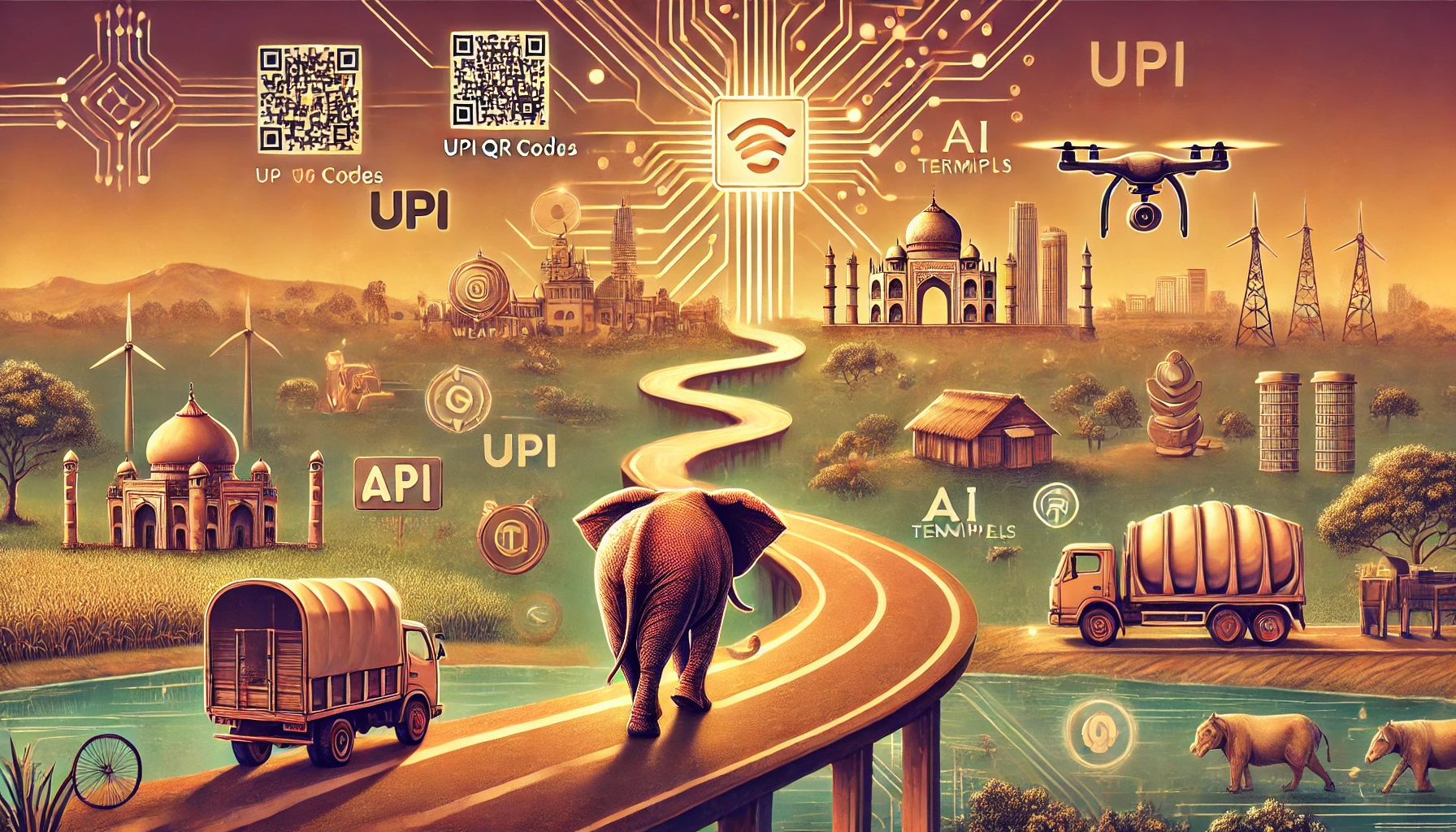
Building technology products for India forces entrepreneurs to boil things down to first principles. What does a billion-person market with low income per capita but high smartphone penetration, with millennia of tradition yet a youth-driven appetite for modernity, truly need? The answers have produced some of the world’s most original tech solutions – from UPI to multi-language super-apps.
Succeeding in India is a litmus test: if you can make it work here, chances are it will work anywhere. As we’ve seen, the keys include respecting cultural drivers (cricket, cinema, community), adapting relentlessly to local usage (and non-usage) patterns, competing on value and service, not just product, and now, increasingly, investing in indigenous innovation.
The Indian market in 2025 is far from a mere follower – it is setting trends in fintech, pioneering new models of commerce and health, and even leading in public digital infrastructure. Tech creators who approach India with a beginner’s mindset – ready to learn, adapt, and solve from scratch – are poised to ride the next wave of growth. Those who don’t will likely be steamrolled by a competitor who does. In short, India rewards the bold and the empathetic: build with first principles and with Indian users at the center, and you can not only win in India but also unlock the future of tech at global scale
Related Posts
Ambient AI: Building Torale from Complexity to Simplicity
The evolution from overengineered web scrapers to grounded search APIs, and what it takes to make information truly ambient. A technical journey through V1's failure, Gemini's unlock, and shipping a production monitoring platform.
Why Your ML Infrastructure Choices Create (or Kill) Momentum
How early architectural decisions create a flywheel effect that accelerates rather than hinders your path to production. Discover the Nimble Flywheel framework for scaling ML from prototype to production.
Modern ML Cookiecutter Template
From dependency hell to device confusion - I built a modality-aware cookiecutter template that gets you from idea to training in minutes, not hours. Here's why modern ML projects need modern tooling.